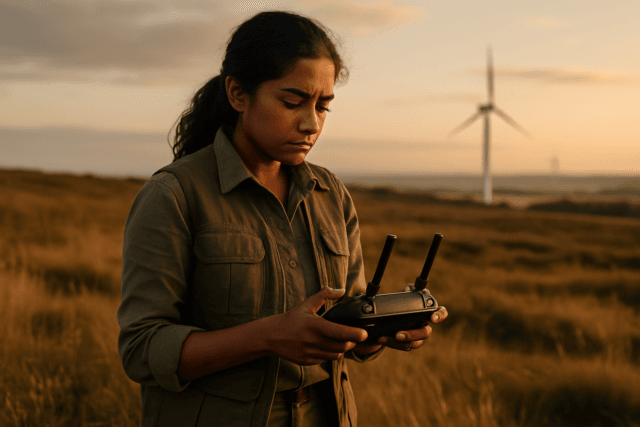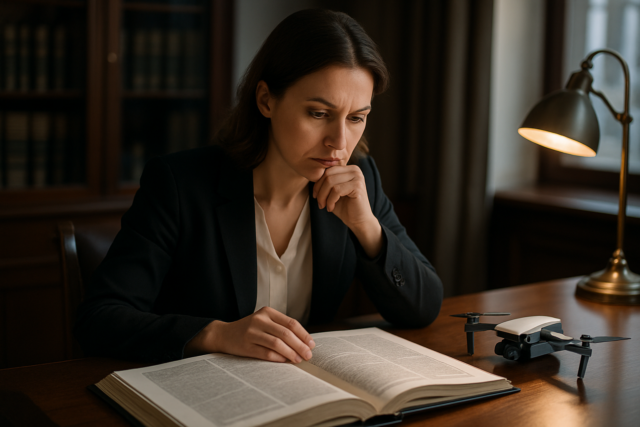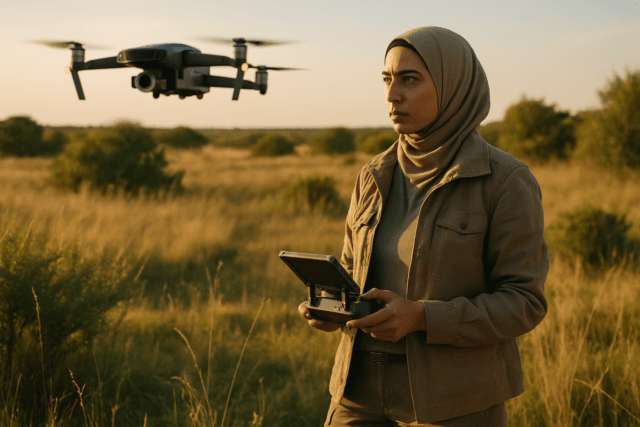Drones have revolutionized wildlife documentary filmmaking, offering unprecedented access and breathtaking perspectives that were once impossible to achieve. These unmanned aerial vehicles (UAVs) provide a non-intrusive means to capture the raw essence of the wild, allowing filmmakers to observe animals in their natural habitats without disturbing them. However, harnessing this technology effectively and ethically requires careful planning, technical prowess, and a deep respect for the natural world.
This guide delves into the crucial considerations and practical tips for aspiring and experienced drone operators aiming to create compelling and responsible wildlife documentaries.
Ethical Considerations: Prioritizing Wildlife Well-being
The primary concern when using drones for wildlife filming is the potential impact on animal behavior and welfare. Drones can cause stress to animals through noise and visual intrusion, potentially altering their migration, feeding, and breeding patterns. Responsible filmmaking necessitates minimizing these impacts, ensuring that the pursuit of stunning footage does not inadvertently harm animal well-being.
Minimizing Disturbance and Stress
- Maintain Respectful Distance: Always keep your drone as far away from wildlife as possible. The U.S. Fish and Wildlife Service recommends launching drones more than 100 meters (328 feet) from wildlife. For marine mammals, specific distances apply: at least 100 yards from most whales and 50 yards from dolphins, porpoises, seals, and sea lions, with even greater distances for specific species like North Atlantic right whales.
- Observe and Adapt: Before flying, carefully observe animal behavior. If animals show any signs of distress, such as increased vigilance or flight responses, immediately cease or modify drone operation. Even subtle reactions can indicate stress.
- Quiet Drones: Opt for drones with low noise output, as quieter models are less likely to spook wildlife. Research suggests that some species, like Asian elephants, are highly sensitive to drone noise.
- Avoid Sensitive Periods: Be mindful of nesting seasons, breeding habits, and other vulnerable periods for wildlife, avoiding drone operations during these times.
- Controlled Approach: When necessary, approach wildlife at higher altitudes, slower speeds, and oblique angles to reduce perceived threat.
Legal and Permitting Requirements
- Know the Laws: Drone regulations vary significantly by country, state, and even specific location. It is crucial to research and comply with all federal, state, and local laws governing drone use, especially in protected areas, national parks, and wildlife refuges.
- National Parks and Protected Areas: In the United States, launching, landing, and operating drones in National Parks are generally prohibited without a permit. Similar restrictions apply in Australian national parks and California Department of Fish and Wildlife (CDFW) lands. Permits are typically granted for scientific study or filmmaking purposes after a review of potential biological impacts.
- Specific Permits: For commercial or scientific wildlife filming, you will likely need specialized permits. For example, in Texas, an Aerial Management Permit (AMP) from the Parks and Wildlife Department and landowner authorization are required for photographing wildlife with drones. Obtaining these permits can take an extended period, so plan accordingly.
- Remote Pilot Certificate: Commercial drone operators in the U.S. must possess a Federal Aviation Administration (FAA) Remote Pilot Certificate.
Technical Aspects: Choosing and Operating Your Drone
Selecting the right drone and mastering its operation are critical for successful wildlife documentary filming.
Drone Selection Criteria
- Exceptional Camera Quality: Prioritize drones offering 4K or higher resolution for crisp, detailed footage. Look for advanced imaging features like optical zoom, slow-motion recording, and High Dynamic Range (HDR). Drones like the DJI Mavic 3 Pro are highly recommended for their 48MP camera, 1x to 28x zoom, and superior imaging.
- Extended Flight Time & Range: Long battery life is crucial for maximizing filming sessions in remote areas without frequent landings. A considerable operational range allows filming from safe distances, reducing disturbance to animals.
- Stable Flight & Obstacle Avoidance: Drones capable of stable flight in diverse weather conditions are essential for unpredictable outdoors. Obstacle avoidance technology prevents collisions, safeguarding both the drone and the environment.
- Low Noise Output: As mentioned, a quieter drone minimizes disturbance to wildlife.
- Thermal Capabilities: Drones equipped with thermal cameras, such as the DJI Mavic 3 Thermal, can detect and track warm-bodied animals through dense cover or at night, crucial for anti-poaching and research.
Optimal Flight and Camera Settings
- Manual Mode: For maximum control over exposure, operate your drone in manual mode.
- ISO: Keep the ISO as low as possible (e.g., ISO 100) to avoid noise and preserve image quality, especially in well-lit conditions.
- Shutter Speed: For video, aim for a shutter speed that is double your frame rate (e.g., 1/60th of a second for 30fps) to ensure smooth, natural-looking motion.
- Aperture: If your drone has an adjustable aperture, use it to control exposure and depth of field. For example, the Mavic 2 Pro’s lens often performs best at f/5.6.
- ND Filters: Neutral Density (ND) filters are essential, especially for filming in bright conditions, as they help maintain the correct shutter speed and prevent overexposure without closing the aperture too much, thereby reducing stuttering in footage.
- White Balance: Adjust white balance according to the lighting conditions (e.g., sunny, cloudy, or custom) to ensure accurate colors.
- Image Format: Shoot in RAW + JPG for still photos; RAW files offer greater flexibility in post-processing. For video, use.MP4 format.
- Pre-Planned Flight Paths: Plan your flight paths in advance to minimize erratic movements that could disturb wildlife.
Operational Best Practices
Beyond ethics and technical settings, skillful operation is key to producing high-quality wildlife documentary footage.
- Practice Makes Perfect: Regularly practice flying your drone to master maneuvers and navigate smoothly. This allows for precise tracking and capture of wildlife.
- Timing is Everything: The “golden hours” of sunrise and sunset often provide optimal lighting for wildlife photography, as animals are frequently more active and the soft light enhances visual appeal. Flying during low-wind conditions also helps ensure stable, smooth footage.
- Silent Observation: Choose a drone with a camouflage design or neutral colors to help it blend into the environment and minimize its visual impact.
- Patience and Persistence: Wildlife filming demands patience. Be prepared to wait for natural behaviors to unfold and for the perfect moments to capture.
- Dedicated Spotter: When possible, work with a wildlife observer to help spot and avoid animals, ensuring safe and ethical operation.
Post-Production and Storytelling
The work isn’t over when the drone lands. Post-production is where your footage transforms into a compelling narrative.
- B-Roll Footage: Capture plenty of supplementary “B-roll” footage from various angles and altitudes. This provides context, smooths transitions, and adds depth and variety to your final edit.
- Subtle Enhancements: Use post-processing software (e.g., Adobe Lightroom or Photoshop) to make subtle adjustments to contrast, saturation, and sharpness. The goal is to enhance the natural beauty without over-processing or misrepresenting the scene.
- Story-Driven Edits: Combine your creative vision with technical skills to tell a compelling story. Experiment with different shots – sweeping panoramas, orbits, or tracking shots – to evoke emotion and keep the audience engaged.
By adhering to these ethical guidelines, mastering technical controls, and practicing responsible operation, drone pilots can contribute significantly to the captivating world of wildlife documentary filmmaking, offering unique perspectives while upholding the integrity and welfare of the animal subjects.





